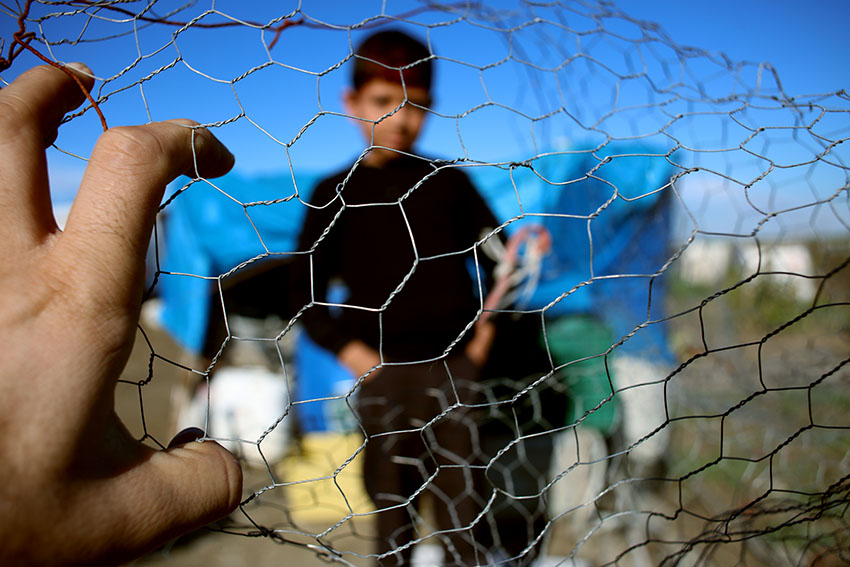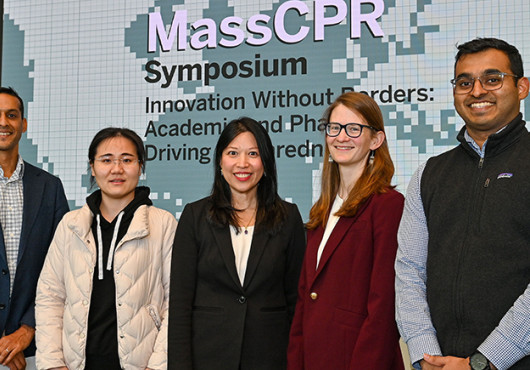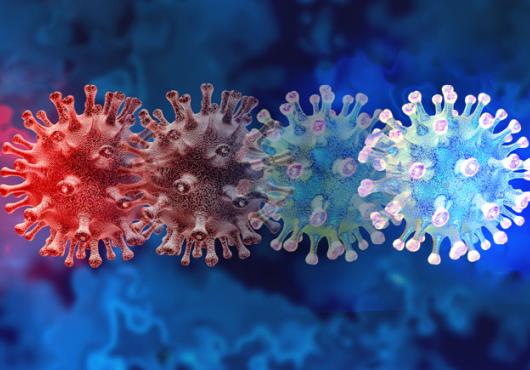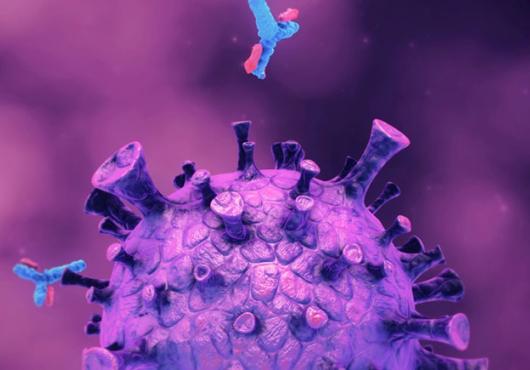
Image: cloverphoto/iStock/Getty Images Plus
This article is part of Harvard Medical School’s continuing coverage of medicine, biomedical research, medical education, and policy related to the SARS-CoV-2 pandemic and the disease COVID-19.
The COVID-19 crisis has exposed long-standing health and social inequities, many driven by chronic pathologies in public health and social and political structures. The pandemic has also acted as a powerful sparkplug for attempts to remedy these ills, including a range of efforts led by Harvard Medical School students.
In the latest example of such work, a group of HMS students led by faculty member Katherine Peeler have partnered with the group Physicians for Human Rights (PHR) to document the treatment of immigrants held in Immigration and Customs Enforcement (ICE) detention facilities during the COVID-19 pandemic.
Get more HMS news here
This collaboration is part of the Harvard Student Human Rights Collaborative, a student-run effort at HMS that also serves as one of the 20 PHR chapters in U.S. medical schools.
Founded in 2017, the HSHRC aims to address human rights issues in local communities and beyond. The group’s work includes a student-run clinic that provides forensic medical evaluations to survivors of torture and other trauma who are seeking asylum in the United States.
The group also raises awareness about human rights through talks, a newsletter, and articles that its members publish in the media.
The new PHR report, Praying for Hand Soap and Masks: Health and Human Rights Violations in U.S. Immigration Detention During the COVID-19 Pandemic, points to alarming gaps in the care and treatment of a marginalized and already vulnerable population and also offers a set of policy recommendations to federal, state, and local health authorities to rectify these problems.
The report, published Jan. 12 and based on a series of in-depth interviews with 50 formerly detained individuals, identifies non-adherence to infection-prevention measures outlined both by the U. S. Centers for Disease Control and Prevention and in ICE’s own published guidelines.
The people interviewed for the report were detained in and subsequently released from 22 ICE facilities—both public and privately-run detention centers—in 12 states. The individuals were detained for an average of 241 days.
The researchers caution that the relatively small number of participants in their study—50 out of more than 16,000 detainees nationwide as of December—does not constitute a representative sample.
However, the consistency of accounts from multiple institutions in various states renders the findings profoundly alarming, the researchers noted. The report, the team said, also represents the most systematic assessment to date of conditions inside ICE facilities during the COVID-19 pandemic.
“While our study is based on interviews with only 50 former detainees, the accounts were deeply worrying, and we suspect this may represent simply the tip of the iceberg,” said Peeler, a faculty member in the Department of Global Health and Social Medicine at HMS and medical expert at PHR.
“ICE and the U.S. government have both legal and ethical obligations to provide humane and evidence-based care for those in their custody, and this includes medical care aimed at preserving the health and well-being of those in detention,” added Peeler, who is also medical director of the HSHRC asylum clinic at HMS. “Our findings suggest that, on this front, ICE has failed.”
These failures pose a threat to detainees, to those who care for them and to the general staff working in ICE detention facilities, and to the public, the authors of the report said.
Indeed, a study by the same group published in JAMA on Oct.29, 2020, found that the number of people per month who tested positive for SARS-CoV-2 in ICE detention facilities between April and August 2020 was 5.7 to 21.8 times higher than the rate in the U.S. general population during that same period.
“While the virus itself cannot discriminate, the greatest impact of this pandemic has fallen on individuals who lack the ability to protect and advocate for themselves because of systemic injustices,” said second-year medical student Caroline Lee, coordinator of the HSHRC asylum clinic and co-author of the report.
“Our interviews reinforced the common humanity in us all, and no single person should have to fight this hard just for basic protections to their health. Medicine must work hand in hand with public health and law to ensure the rights for the most vulnerable individuals of our society.”
The report’s central findings include:
- Unreliable information: Detainees reported that some staff downplayed the significance of the pandemic, and 85 percent of those interviewed reported they learned about COVID-19 from watching television.
- Lack of social distancing: Interviewees reported they slept, on average, less than 3 feet from other detainees; 96 percent reported that they were less than 6 feet from their nearest neighbor when sleeping; 80 percent reported not being able to maintain a 6-foot distance from others in their eating area.
- Mask scarcity: 17 percent of interviewees reported they were never given masks. When detained people were given masks, it was often a one-time occurrence, forcing them to make their own replacement masks or use the same mask for months.
- Soap and hand-sanitizer deficiency: Some 72 percent of interviewees reported not having regular access to free soap and water or hand sanitizer at some point during detention.
- DIY disinfection: detainees reported having to disinfect detention facilities themselves; 26 percent of participants reported never having observed disinfection of frequently touched surfaces in common areas.
- Failure to test and isolate: 21 of the 50 respondents experienced symptoms of COVID-19 while in detention, with 18 of the 21 reporting their symptoms to facility staff members. Yet only 3 of the 18 were appropriately isolated from the general population and tested for COVID-19; the remaining 15 were not tested or isolated. Interviewees reported facing prolonged wait times before being able to see a medical professional, with an average wait time of 4 days. One person reported a wait time of 25 days for an appointment while two people said they were never seen by a medical professional, even after reporting symptoms suggestive of COVID-19.
- No special accommodation for people with comorbidities at heightened risk for severe COVID-19: 44 of the 50 interviewees had at least one comorbidity that put them at heightened risk for severe disease. While 28 of the 44 reported their comorbidities to detention staff, only four were told that they were at high risk for serious illness with COVID-19 and none was given a private room.
- Concerns over retaliatory behavior: 43 of 50 participants (86 percent) stated that they reported concerns about COVID-19, including verbally complaining to staff about unsanitary conditions or lack of personal protective equipment, filing formal grievances, and going on hunger strikes. Of the 43 who protested, 24 individuals (56 percent) said they experienced acts of intimidation and retaliation following their complaints, including verbal abuse by detention staff, use of pepper spray, solitary confinement, and threats or actual limiting of food, communication, or commissary access.
Health advocacy is an underappreciated, yet rapidly growing dimension of medical education and is tied to social accountability and health equity for underprivileged populations.
“By exposing long-standing health disparities, the COVID-19 pandemic has underscored just how important the role of the physician is as a health and human rights advocate,” Peeler said. “It is our role as medical educators to ensure that we encourage and support student involvement in advocacy-driven research.”
Fourth-year medical student and co-author of the report Parsa Erfani said the experience has been instrumental in teaching him that approaching the right to health from the systems and policy levels is just as important to doctoring as is understanding the mechanisms of disease.
“Doing more of this work, you begin to see how immigration detention tears people down and makes them feel less than human, as if they need to prove their right to safety and health or, in the midst of a pandemic, their right to live,” Erfani said. “In medicine, we have a unique opportunity to fight for people’s right to health. We’re trying to find the most effective ways to do that.”
“As physicians-in-training, we must do more than serve the patients in our established clinics and hospitals. We must seek out opportunities to provide care for the most vulnerable members of society who lack access to high-quality care in academic medical centers,” said Nishant Uppal, co-author and fourth-year medical student at HMS. “Our oath extends into detention facilities where treating patients holistically requires us to simultaneously address biological aspects of disease and the societal ills that deny them basic human rights.”
Based on the report’s findings—and to prevent further outbreaks of COVID-19—the researchers call for the safe release of people from immigration detention, in accordance with recommendations from public health experts, international human rights groups, and U.S. constitutional standards.
The report makes detailed policy and practice recommendations about immigration detention and releases to the Department of Homeland Security (DHS), Congress, state governors, local public health authorities, the CDC, and the United Nations Human Rights Committee.
Some of the key recommendations include:
To the U.S. Department of Homeland Security
- Release people age 65 and older and those with underlying medical conditions from detention to allow safe sheltering in nondetention settings, unless there is compelling evidence that a person may represent a public security risk.
- End detention of children and families.
- Scale up community-based alternatives to detention through nonprofit organizations.
- Enforce full and strict implementation of medical recommendations across facilities with sanctions for non-compliance, including facility closure.
To the U.S. Congress
- Reduce the number of people in immigration detention by eliminating local bed count quotas (number of detention beds available for interior enforcement), rejecting funding requests to expand detention capacity, eliminating funding for private prison contracts, and increasing funding for community-based alternatives to detention, which are contracted to nonprofit organizations.
- Adopt legislation that codifies detention standards, including standards of medical care.
- Exercise oversight, including funding penalties for violations
- Adopt legislative efforts, including those that provide for release from immigration detention during a communicable disease-related national emergency.
- Continue to uphold whistleblower protections and safeguard the ability of health professionals working in detention facilities to report concerns about conditions.
To state governors and local public health authorities
- Require immigration detention facilities, including county and local jails, to reduce their detention populations.
- Direct local and state law enforcement to cease compliance with so-called detainers—requests for local and state law enforcement to transfer people to the federal deportation system.
- Coordinate with the U.S. Congress as well as with DHS and the Office for Civil Rights and Civil Liberties to ensure facility oversight and monitoring, including unannounced inspections by independent, outside experts.
To the Centers for Disease Control and Prevention
- Issue clear guidance to local, state, and federal detention officials, judges, and law enforcement agencies on reducing immigration detention intake and population size to reduce the spread of COVID-19.
- Require a high standard of precaution in CDC guidance on safe conditions in detention settings and eliminate caveats based on purely operational considerations.
- Issue public health guidelines distinguishing “solitary confinement” from “quarantine” and “medical isolation” to prevent punitive conditions for those who are exposed to COVID-19.
In March 2020, the World Health Organization, the U.N. High Commissioner for Human Rights, and U.N. High Commission for Refugees issued a statement highlighting the particular vulnerabilities of migrants and refugees amid the pandemic and called for the immediate release of migrant children and their families and those detained without a sufficient legal basis.
U.S. federal courts have ordered ICE to locate and release people at high risk of severe illness or death due to the coronavirus, to give masks and sanitizer to detainees, to ensure availability of testing, and to take a range of precautionary measures, such as isolating people who test positive, temporarily halting intake, enforcing social distancing and mask wearing, and providing appropriate sanitary and hygiene supplies.
Co-authors of the report include Ranit Mishori, senior medical advisor at PHR and professor of family medicine at Georgetown University School of Medicine, Kathryn Hampton, senior asylum officer at PHR, and Elsa Raker, PHR asylum program associate.
The work was supported in part through a grant from the Office of Scholarly Engagement at HMS.





